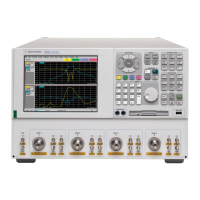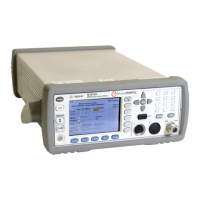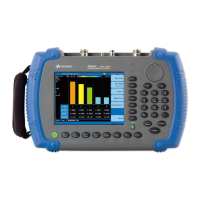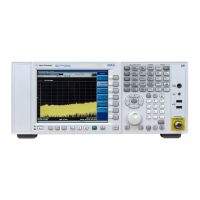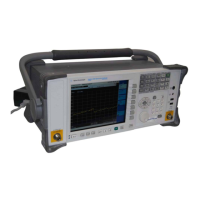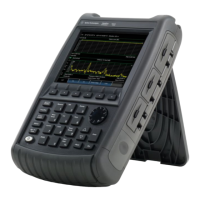5-4 Service Guide N5230-90024
Theory of Operation PNA Series Microwave Network Analyzers
Network Analyzer System Operation N5230C
Synthesized Source Group
The built-in synthesized source generates a swept, stepped, or continuous wave (CW) signal in the
frequency ranges as listed in Ta b l e 5 - 1 . The source group provides two signals: an LO signal and an incident
signal. These two signals are normally at the same frequency (except for a 250 kHz offset) except for Option
080, frequency offset mode, where they can be set to different frequencies.
The LO signal is sent directly to the mixers in the receiver group. The incident signal is routed to the front
panel test ports and then to the device under test (DUT) as the test signal. A portion of the incident signal is
either split or coupled off (in the signal separation group) and sent to the mixers in the receiver group as
reference signals. These reference signals are compared (mixed) with the LO signal in the receiver group.
The incident signal output power is leveled by an internal automatic leveling control (ALC) circuit. The
maximum output power level of the network analyzer at the test ports is shown in Ta b l e 5 -1 .
Refer to “Synthesized Source Group Operation” on page 5-6.
Signal Separation Group
The incident signal from the source group is separated into a reference path and a test path. The reference
signal is transmitted to the receiver group. The test signal is transmitted through—and reflected from—the
DUT and is then transmitted to the receiver group.
The signal separation group also provides:
• RF path switching to allow forward and reverse measurements
• external connections for the DUT (Option 014)
• step attenuators in the source path to reduce power to the DUT (Option 1E1)
Refer to “Signal Separation Group Operation” on page 5-15.
Receiver Group
The receiver converts the test and reference signals to 250 kHz intermediate frequency (IF) signals for signal
processing, retaining both magnitude and phase characteristics. The IF signals are converted to digital
Table 5-1 Frequency Range and Maximum Output Power Level
Maximum
Leveled
Output
Power
a
a. Specifications are for Port 1 only; Port 2 performance is a typical characteristic.
Nominal
Output Power
at Instrument
Preset
Frequency Range
10 MHz
to
45 MHz
b
b. Values for 10 MHz to 45 MHz are typical.
45 MHz
to
20 GHz
20 GHz
to
40 GHz
40 GHz
to
50 GHz
Option 220
Option 225
-5 dBm
+5 dBm
+5 dBm
+5 dBm
+5 dBm
Option 420
Option 425
-10 dBm
0 dBm
0 dBm
0 dBm
0 dBm
-5 dBm
-5 dBm
Option 520
Option 525
-15 dBm
0 dBm
0 dBm
0 dBm
0 dBm
-5 dBm
-5 dBm
-10 dBm
-15 dBm
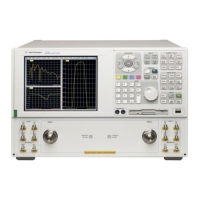
